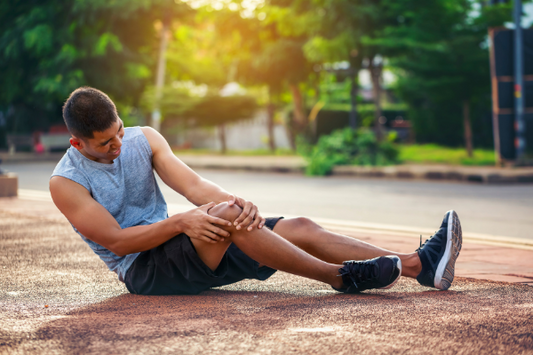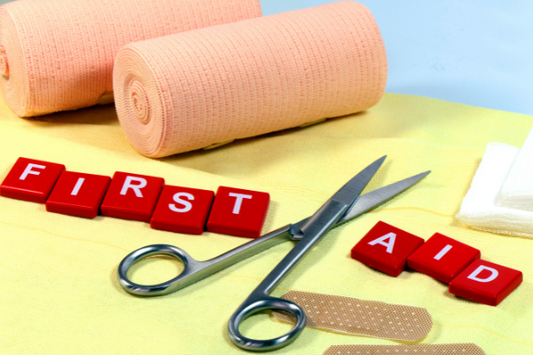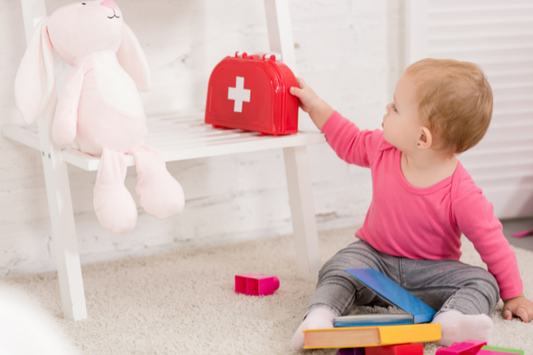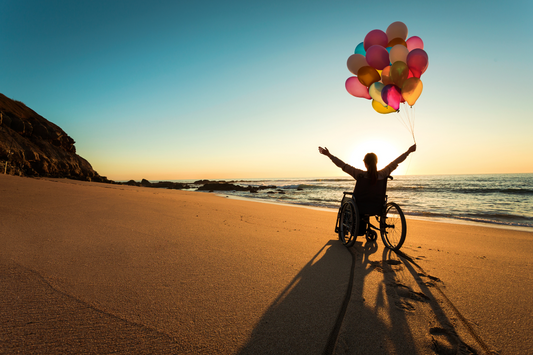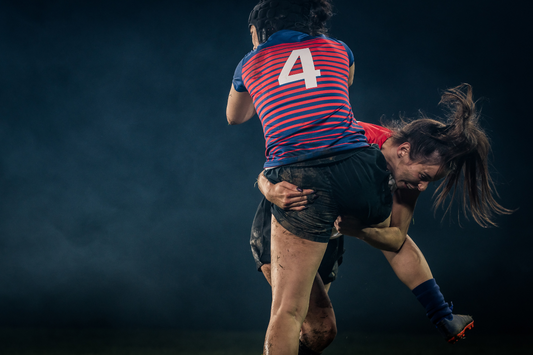Do you have the right type of first aid kit to help at a car crash?
Witnessing a car accident is really confronting.
Occurring out of the blue with no time to prepare, you are suddenly in a situation where you may be keeping someone alive until the ambulance arrives.
We all think having a first aid kit in the car means we can help people who have had a car accident.
I remember stopping to assist at a car accident on a remote country road.

As I reached the glove box for my first aid kit, I realised I didn't have any equipment these people were going to need.
I recognised the difference between a first aid kit and a trauma kit and I felt useless.
I had some bandaids, little scissors, tweezers and pins, one bandage and one thermal blanket. This kit was for minor injury to me, kept in my car.
Not for multiple casualties involved in a high speed impact.
What I needed was lots of high pressure dressings for severe bleeding, lots of thermal blankets and burns dressings just for starters.
I vowed from that day to be more prepared so I never had to feel that way again.
Your immediate reaction might be to assist, and having the right first aid supplies is essential in those crucial moments before emergency services arrive.

This guide is help you either improve your current car first aid kit, or assist choose a trauma first aid kit designed to be used by every day people who want to help others.
We'll dive into the importance of training and the responsible use of these supplies.
Essential First Aid Supplies for a Car Accident
This list prioritises supplies most useful for the types of injuries commonly encountered at car accidents:
Essential Trauma Kit Components
Your Car Accident Trauma kit should include
- Tourniquet: At least 1 or 2 in case of multiple casualties
- Trauma dressings (OLAES and/or Israeli): At least 1 or 2 in case of multiple casualties
- Trauma Shears: Heavy-duty shears capable of cutting through thick clothing layers, zippers, button and boots. Essential for accessing wounds quickly and safely.
- 4 Emergency Blankets: Help to protect your casualties from shock by keeping their body temperature above 35 degrees Celsius.
- Nitrile Gloves: Blood-borne pathogens are a serious risk. Pack extras as gloves tear and you may need to help multiple patients.
- Burn gel dressings
- Whistle: To signal for help if needed.
- Head torch so your hads are free to help
- trauma shears

Important Information!
After 17 years as a first aid trainer, I am constantly surprised by the complete abscence of training on first aid supplies issued by upper management to staff.
It is so incredibly essential to know how to use your kit prior to responding to an emergency when peoples lives are on the line.

Our GoodSam trauma kit contains the necessary items to control serious bleeding and prevent further blood loss for a victim suffering a traumatic injury.
This compact kit has been carefully built to allow for easy access to all the components inside even under duress.
It can be easily stored in your glovebox, sports bag or backpack.
The Psychological Impact of Providing First Aid:
Beyond the physical supplies, it's important to acknowledge the psychological impact of being first on the scene. Witnessing a car accident can be traumatic, and providing first aid can be stressful. Consider these points:
Recognise Your Emotional Response: It's normal to feel anxious, scared, or overwhelmed. Acknowledge these feelings and try to remain calm. Deep breathing can help.
Prioritise Your Safety: Don't put yourself in danger. Assess the scene for hazards before approaching.
Communicate Clearly: Introduce yourself to the injured person and reassure them that help is on the way. Speak calmly and clearly.
Listen Empathetically: Injured individuals may be distressed or confused. Listen to their concerns and offer comfort.
Know Your Limits: Don't attempt anything you're not trained to do. Your primary role is often to call for help, provide reassurance, and manage the scene until professionals arrive.
Seek Support: If you're affected by the experience, talk to someone you trust or seek professional help. Debriefing can be beneficial.
Important Considerations:
Regularly Check Your Supplies: Ensure items haven't expired or been used. Replace used items immediately.
Store Your Supplies Properly: Keep them in a readily accessible location in your vehicle, but not where they could become a projectile in a crash. A dedicated first aid bag is ideal.
Training is Key: A well-stocked kit is useless without the knowledge to use it. Consider completing a comprehensive first aid course, specifically one that covers trauma and car accident scenarios. This will give you the confidence and skills to act effectively.
External Australian References
St John Ambulance Australia: https://www.stjohn.org.au/
Australian Red Cross: https://www.redcross.org.au/
Emergency Management Australia: https://www.ema.gov.au/
Safe Work Australia: https://www.safeworkaustralia.gov.au/
Australian Resuscitation Council (ARC): https://www.resus.org.au/
Conclusion:
Being prepared to help at a car accident can make a real difference.
By equipping yourself with the right first aid supplies and, more importantly, the right training, you can be a valuable asset in an emergency situation.
Remember, your safety is paramount, so always assess the scene before approaching and never attempt anything beyond your capabilities.
Your willingness to help, combined with preparation and knowledge, can make a significant positive impact.


